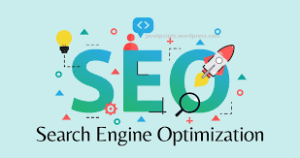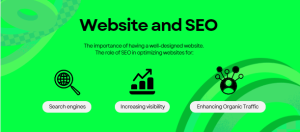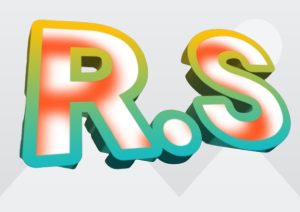Best On-Page SEO Services Expert
On Page SEO In today’s highly competitive digital landscape, having a well-optimized website is crucial for success. Search Engine Optimization (SEO) enhances a website’s visibility on search engines like Google, Bing, or Yahoo. There are two critical components of SEO: on-page and off-page SEO. While off-page SEO deals with external factors like backlinks, social media, and brand mentions, on-page SEO focuses on optimizing elements directly on your website.This guide explains what on-page SEO services entail, why they are critical, and the steps to achieve optimal on-page performance.

What is On-Page SEO?
On-page SEO refers to optimizing individual web pages to improve rankings and earn more relevant traffic in search engines. It includes both the content and HTML source code of a page that can be optimized, unlike off-page SEO, which involves signals from outside your website.
Why On-Page SEO is Essential
Effective on-page SEO helps search engines understand what your website is about and how it is valuable to users. With search engines continually evolving their algorithms, user experience and content relevance have become key factors for ranking high in search results. If your site is well-optimized, your competitors may rank higher, making it easier for your business to be discovered.
Critical Components of On-Page SEO Services
-
Content Optimization
- Content is the backbone of on-page SEO. Search engines like Google use advanced algorithms to evaluate and rank content based on relevance, quality, and user intent. Effective content optimization involves several strategies:
- Keyword Research and Placement: Identifying the right keywords is crucial. You need to research what terms your target audience is searching for and naturally integrate these keywords into your content. But avoid keyword stuffing, which can harm your rankings.
- Content Quality and Length: High-quality, engaging, and informative content is essential. Google favours content that thoroughly answers users’ questions. Articles that are detailed and exceed 1000 words generally perform better.
- User Intent: Search engines aim to deliver the most relevant results to users. So, your content must align with what users seek (informational, transactional, or navigational queries).
- Freshness: Regularly updating your content signals search engines that your site is relevant.
-
Title Tags and Meta Descriptions
- Title tags and meta descriptions are critical elements for both SEO and click-through rate (CTR):
- Title Tags: This is the clickable headline in search results, and it should include the target keyword while being descriptive. Search engines use title tags to understand what the page is about, so it’s crucial to craft a compelling title tag of around 50-60 characters.
- Meta Descriptions: Short summaries appear below the title tag in search results. Though meta descriptions don’t directly influence rankings, they significantly affect CTR. A well-written meta description should be concise (about 150-160 characters), relevant to the content, and include your focus keyword.
- URL Structure
- A clean and organized URL structure makes navigating your website easier for search engines and users. URLs should be:
- Short and Descriptive: A good URL gives an idea of the page content and includes a primary keyword. Avoid long, confusing URLs with unnecessary parameters.
- Use Hyphens: Use hyphens to separate words rather than underscores to make the URL more readable.
-
Headings and Subheadings
- Proper use of headings (H1, H2, H3, etc.) is another vital part of on-page SEO. They help in organizing the content and making it easy for both users and search engines to understand the structure of your page:
- H1 Tag: The H1 tag should describe the page’s main topic and include the primary keyword.
- Subheadings (H2, H3, etc.): Break up your content with relevant subheadings to make it scannable for users. Include secondary keywords where appropriate.
-
Internal Linking
- Internal linking refers to linking from one page of your website to another. It helps in:
- Passing Link Equity: You spread authority across your site by linking to other relevant pages.
- Improving Navigation: Internal links make it easier for users and search engines to discover other relevant content on your site.
- Reducing Bounce Rate: When users find helpful, related content through internal links, they are likelier to stay on your website longer.
-
Image Optimization
- Search engines can’t ‘see’ images the way humans do, so it’s essential to optimize your images with the following:
- Alt Text: Provide a brief image description with keywords to help search engines understand what the image represents. Alt text also makes your site more accessible to users with visual impairments.
- Image Compression: Compress your images to reduce load times without sacrificing quality. Faster websites provide a better user experience, which is a ranking factor.
-
Mobile-Friendliness
- With mobile devices accounting for over 50% of global web traffic, optimizing your website for mobile is non-negotiable. This involves:
- Responsive Design: Ensure your website looks and functions well on all device types—desktop, tablet, and mobile.
- Page Speed: Mobile users expect fast-loading pages, so optimizing for speed is crucial. Google has also made page speed a ranking factor for mobile searches.
-
Page Speed Optimization
- A slow website frustrates users and negatively affects your SEO rankings. Here are some key strategies for improving page speed:
- Minify CSS, JavaScript, and HTML: Reduce the size of code files to improve load times.
- Use Browser Caching: This allows returning visitors to load your site more quickly by storing some files locally.
- Optimize Server Response Time: A fast server ensures your site loads quickly.
-
Schema Markup
- Schema markup is a type of structured data that helps search engines understand the context of your content. It can enhance your SERP appearance with rich snippets like star ratings, product information, or event times.
- User Experience (UX) Signals
- Search engines are increasingly considering user behaviour metrics as part of their ranking algorithms:
- Bounce Rate: A high bounce rate signals that users aren’t finding your content valuable.
- Dwell Time: This refers to the time users spend on your site. A longer dwell time indicates your content is engaging and useful.
- Engagement: The level of interaction with your website (clicks, scroll depth) influences how search engines rank your site.
Tools for On-Page SEO
To perform effective on-page SEO, you’ll need the right tools to analyze and optimize your website. Some popular tools include:
- Google Search Console: Helps you monitor, maintain, and troubleshoot your website’s presence in Google Search results.
- SEMrush/Ahrefs: These tools provide insights into keyword rankings, backlinks, and content optimization opportunities.
- Yoast SEO: A popular WordPress plugin that helps with meta tags, keyword optimization, and readability.
Conclusion
On-page SEO services are essential for driving organic traffic and ensuring your website ranks high in search engines. From content optimization and keyword usage to improving site speed and user experience, each aspect plays a crucial role in achieving SEO success. By investing in a comprehensive on-page SEO strategy, you not only improve your search engine rankings but also offer a better user experience, which ultimately leads to higher conversions.

